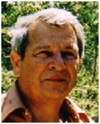The Novichok Thing, Russian Nerve Agents
Chemical warfare at the heart of a new toxic cold war?

That title ought to get your attention in a hurry, don't you agree?
In my perception, it certainly should!
So, what happened?
What Happened?
As you may have gleaned from recent news, on March 4, 2018, in the city of Salisbury
(population of 60,000) in Wiltshire, England, two people were found on a downtown park bench in a state of unresponsiveness. They were transported to the local hospital where they are said to still remain in intensive care, nearly two weeks later.
The local police officer, Detective Sergeant Nick Bailey, a first responder at the scene, was also hospitalized. His condition has not been reported since then.
Some Events
Already shortly after 7 AM on March 8, in the show "
Good Morning Britain," Amber Rudd, the British Home Secretary unequivocally declared that the two "targets" and the officer were suffering from exposure to a nerve agent. Seven days after the attempted assassination "Almost 200 specialists from the RAF and Marines began removing contaminated materials to be sent for analysis at the nearby Porton Down defence laboratory." (
Telegraph, Mar. 11, 2018 ).
In the same interview, "Ms Rudd said the nerve agent used was 'very rare' but declined to name the precise chemical and emphasised that the risk to the public was low" and also that "Samples from the victims have been tested by experts at the Defence Science and Technology Laboratory at Porton Down."
As it so happens, Porton Down, just a few miles from Salisbury, is the secretive 7,000 ac military facility that houses the
Defence Science and Technology Laboratory (DSTL) where nerve agents have been developed and tested over decades of controversial research (Wikipedia,
accessed on March 18).
The Targets
The "targets", as widely reported were the Russian citizens Sergei Skripal (age 66) residing in the Salisbury area, and his daughter Yulia Skripal (age 33), by all accounts I've seen a Russian citizen, who was visiting from Russia. Sergei was a former intelligence officer for the Russian military and had become a double agent to act as spy for Britain in the mid 1990s (
Wikipedia: Sergei Skripal ).
The
Daily Mail (probably on March 11) reported that "[Sergei] Skripal was convicted of passing state secrets to Britain in 2006 before being given refuge in the UK [my emphasis] as part of a spy swap." However, as reported by the
BBC on March 14, "Police confirmed that Mr Skripal, who came to the UK in 2010 as part of a "spy swap" after he had been convicted by Russia of passing information to MI6, is a British citizen." There does not appear to be any date published of when he had become a British citizen.
And now to the chemistry of things:
The Chemistry
Having been interested in the environmental chemistry of things for decades, as demonstrated by the 1987 book (
QSAR [Quantitative Structure-Activity Relationships] in Environmental Toxicology - II), I also came to look at some of the "chemical warfare agents." After all, one or more of such materials had even been commercially produced and sold as "pesticides," like Amiton (also known as "
VG nerve agent"). Indeed, many other pesticides contain related structural components of such compounds. I'm pleased to see this series of international scientific gatherings that I started in 1983 is going to have its
18th meeting this coming June in the city of Bled, Slovenia.
But back to the warfare agents, specifically, the news about the" Novichok agent" that is at the center of it all.
The Novichok Thing
To begin with, there is no single "Novichok [nerve] agent" (material or substance). During the times of the Cold War, decades ago, major world powers were researching and (probably) developing new substances that could potentially be used for chemical warfare. Of course, this chemical warfare race came to a close with the international treaty known as
Chemical Weapons Convention that came into force in 1997.
On the internet, one can easily find information on the chemical structures of approximately 20 of such "Novichok" materials. What's surprising though, the
ChemSpider database (provided by the
Royal Society of Chemistry) that claims to list 63 million individual chemicals (approximately one half of all described chemical compounds) did not list any of these substances when I checked a day ago; I wonder why.
These "
Novichok agents" have comparatively simple structures with just a few atoms, all of them. They could be produced quite easily in any chemical laboratory that has the necessary system to manufacture materials that are sensitive to decomposition by exposure to moisture or air (whether highly toxic or not at all).
In fact, there must be numerous facilities in many countries that have the capability to synthesize such. So, the idea that any such material "could only have come" from one country is total nonsense. Especially in the relatively minute quantities that would poison a few exposed individuals.
In my chemical opinion, any claim to the contrary is lacking pertinent understanding of the "art of chemistry."
Dr. Klaus L.E. Kaiser -- Bio and
Archives |
Comments
Dr. Klaus L.E. Kaiser is author of CONVENIENT MYTHS, the green revolution – perceptions, politics, and facts Convenient Myths

 That title ought to get your attention in a hurry, don't you agree?
In my perception, it certainly should!
So, what happened?
That title ought to get your attention in a hurry, don't you agree?
In my perception, it certainly should!
So, what happened?